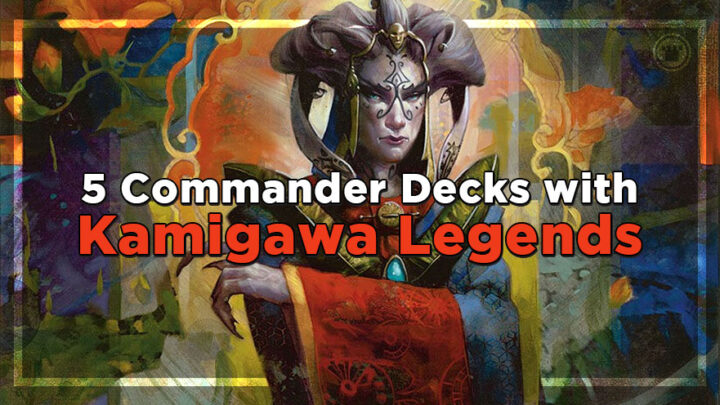The light from Kamigawa: Neon Dynasty glows gently from just over the horizon, and it won’t be long before we’re immersed in the hustle and bustle of the cyberpunk plane. Kamigawa has been through a lot since our last visit; lorewise, we’re arriving more than 1200 years after Saviors of Kamigawa, and the plane has seen a number of technological advancements.
Many players are looking back at the old Kamigawa block, speculating about which characters and mechanics might return. However, I think there’s more merit to these sets now than just attempting divination through them. I want to look at some of the older legendary creatures for new deck inspiration!
There will no doubt be new legendary creatures to compliment or even overhaul many decks, as well as spawn new ones. In order to fully appreciate them, however, you need to get a sense of those that came before them, and the influence they had on the game. Who knows, maybe you’ll find something inspiring in these relics, and maybe even your next new commander!
Meloku the Clouded Mirror – Illusions
With just 51 decks to their name on EDHREC, Meloku the Clouded Mirror is certainly a niche choice. They have a lot of hidden power, however: they’re usually featured in the 99 of many Lands decks as a combo piece, and the powerful support for Illusions can make this Moonfolk Wizard a great midrange/combo commander.
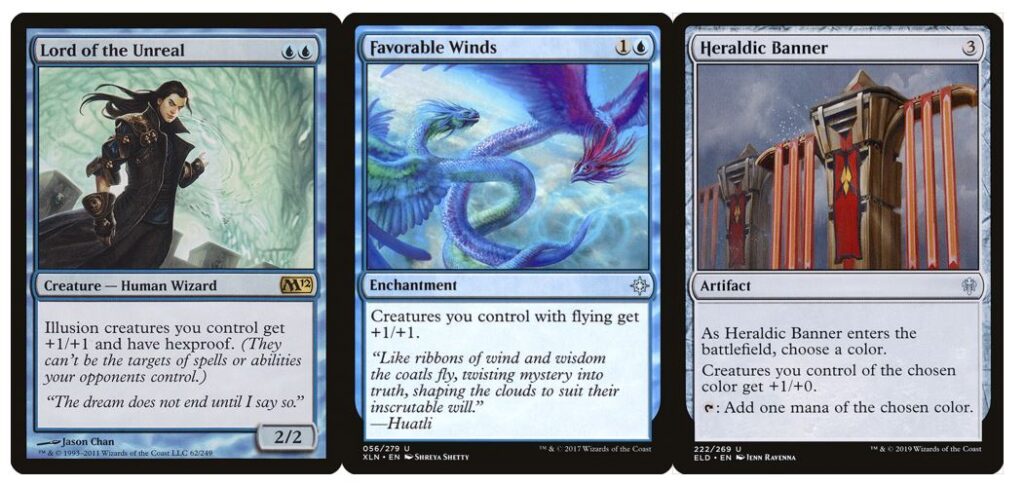
Meloku’s ability allows you to generate Illusion tokens, so you can lean into them as either a strong defensive engine or even your primary aggressive force. Lord of the Unreal is an Illusion lord that rarely sees play outside of Changeling decks, but it will fit beautifully here. Not only is a power and toughness buff very useful, but hexproof can make dealing with your board a case of “board wipe or bust”. Considering you’ll have plenty of room for counterspells, even that may prove a tricky option for opponents. Favorable Winds and Heraldic Banner are additional board-wide buffs to give some consistency to their increased size.
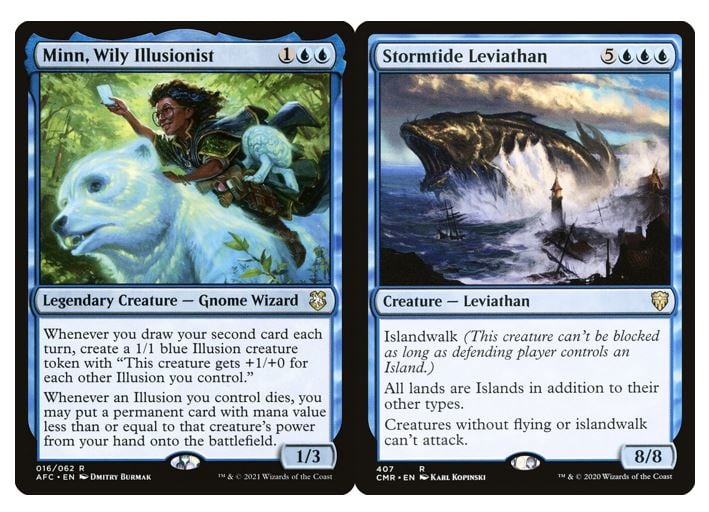
One of the best new additions to Illusions, however, is Minn, Wily Illusionist. This Gnome Wizard is a powerful lord and token engine, all while giving you additional value when you lose any Illusions. If an opponent trades one of their creatures with one of your Illusions, for example, you might get to play out a Stormtide Leviathan for free!

Sometimes, winning the game can sometimes take more than just combat. If you have Meloku on board, you can cast Time Warp, then play Mystic Sanctuary to put Time Warp on top of your library, and activate Meloku’s ability to bounce Mystic Sanctuary to your hand and make a 1/1 Illusion. That’s infinite turns and infinite tokens!
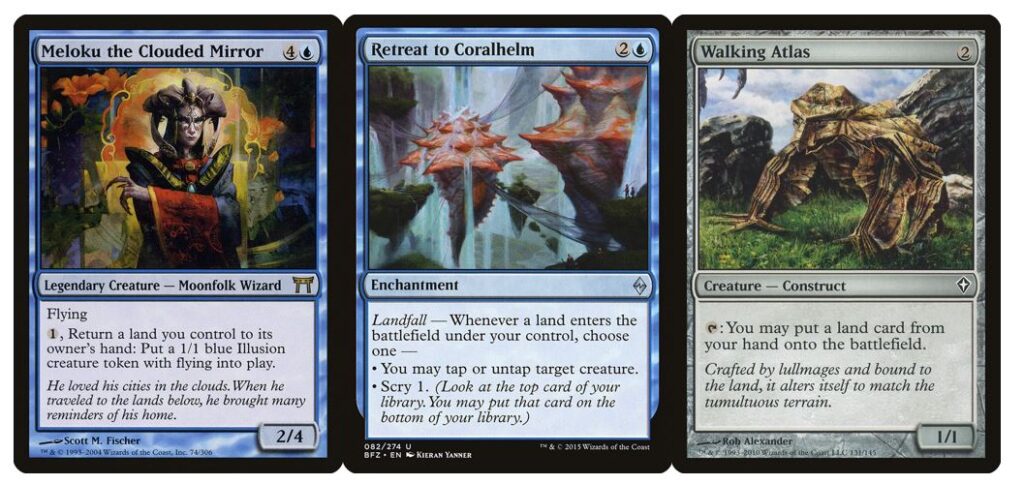
If you want to avoid extra turn spells, you can go infinite with Meloku, Retreat to Coralhelm, and Walking Atlas. You tap Walking Atlas to put an untapped land into play, which triggers Retreat to Coralhelm’s landfall ability, untapping Walking Atlas. Then tap the land for mana, and use the mana to activate Meloku’s ability. This leaves you back at the start of this loop, but with a 1/1 Illusion in play, too. You can repeat the process an arbitrary number of times to create a lethal attacking force at instant speed!
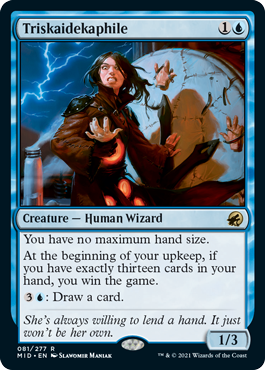
Since it’s also incredibly easy to leave mana up in a blue deck, and it’s so cheap for Meloku to bounce lands to your hand, it’s incredibly easy and safe to include Triskaidekaphile as an alternate win condition. All you need to do is wait until just before your turn and bounce enough lands to your hand to give you 13 cards in hand. Then you win the game!
Here’s a Meloku list I brewed up!

If your opponents try to curb your aggression, you can sneak in a quick combo while they’re short on resources. Similarly, if they spend too many resources trying to stop your combos, they might just lose to Illusion beatdowns! If you like being able to keep opponents in check while also being able to turn on a dime, then this may be the deck for you.
Shirei, Shizo’s Caretaker – Aristocrats
Shirei is the grindy player’s Aristocrats commander. If you want to nickel and dime your opponents into submission, look no further than this Spirit. This is a deck I’m personally very familiar with; my good friend Ian (@martial_facts) regularly brings his Shirei deck to the table and performs incredibly well with it.
Shirei’s ability may seem like a very small ball effect in Commander, but that’s actually its strength: every creature and spell in the deck feels too low-impact to warrant answering. You’ll never be able to stop a Shirei player from taking game actions, and taking multiple small game actions is exactly how they win.
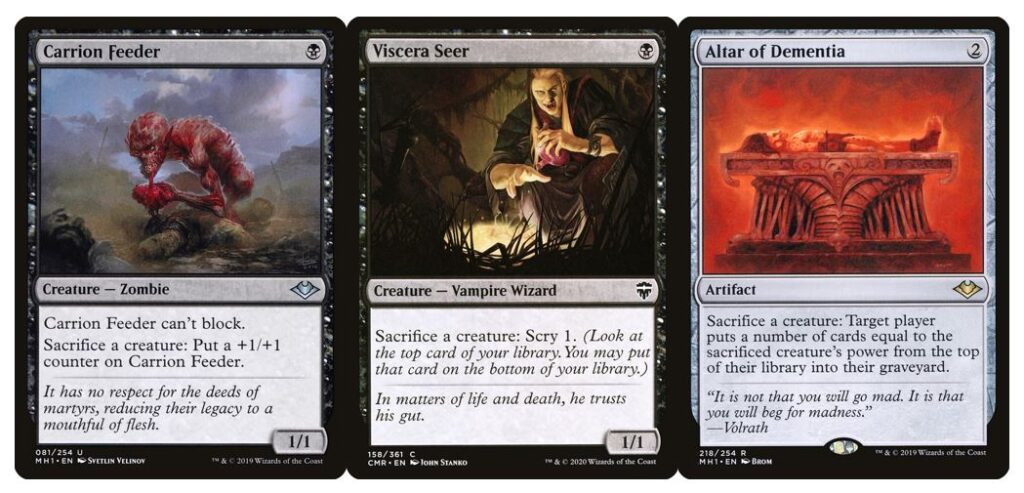
Shirei wants to work with a lot of tiny creatures, so let’s give them exactly what they want. Instant-speed sacrifice outlets are ideal, as you can activate them on each opponent’s turn, triggering Shirei’s ability four times per turn cycle! Carrion Feeder and Viscera Seer are two great examples that can also be returned with Shirei’s ability, though more resilient sacrifice outlets like Altar of Dementia or Ashnod’s Altar will work perfectly fine here, too.

Next, you need something to feed to the sacrifice outlets, but they have to be small enough to be brought back by Shirei. Thankfully, black is overflowing with amazing options. Doomed Dissenter nets you a Zombie token whenever it dies, Abyssal Gatekeeper is a repeatable edict effect, and Kalastria Healer drains your opponents. All of these creatures seem inconsequential individually, but when you’re sacrificing several of them four times a turn, it really starts to add up!
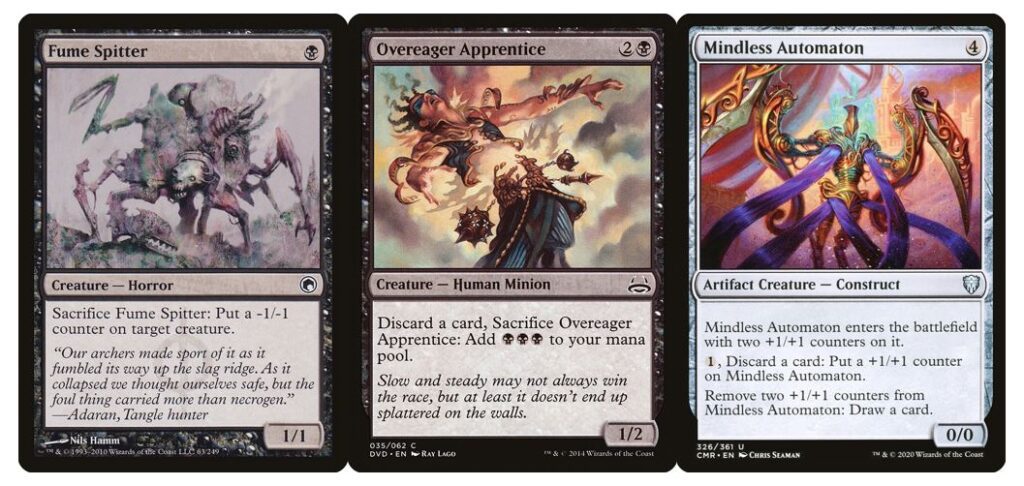
Some creatures can even sacrifice themselves for value. Fume Spitter can start whittling down creatures and keep any heavy-hitters in check. Overeager Apprentice can give you an enormous boost of mana, equating to four Dark Rituals per turn cycle! My personal favorite is Mindless Automaton: you remove two +1/+1 counters to draw a card, then Shirei brings it back to do it all over again on the next turn. That’s four extra cards per turn!
You may have all the grinding power you could ever want, but you still need to close the game. Aristocrat classics are one of the best choices, with Zulaport Cutthroat and Blood Artist proving to be as good as ever in the vicinity of dying creatures. Plus, they can also be brought back with Shirei if they’re targeted! Gray Merchant of Asphodel is an easy inclusion; it may not be recurrable, but you’ll often have an abundance of devotion for a massive life swing. Finally, Flesh-Eater Imp is a cheeky way to sacrifice your minions for value, all while setting up an infect kill!
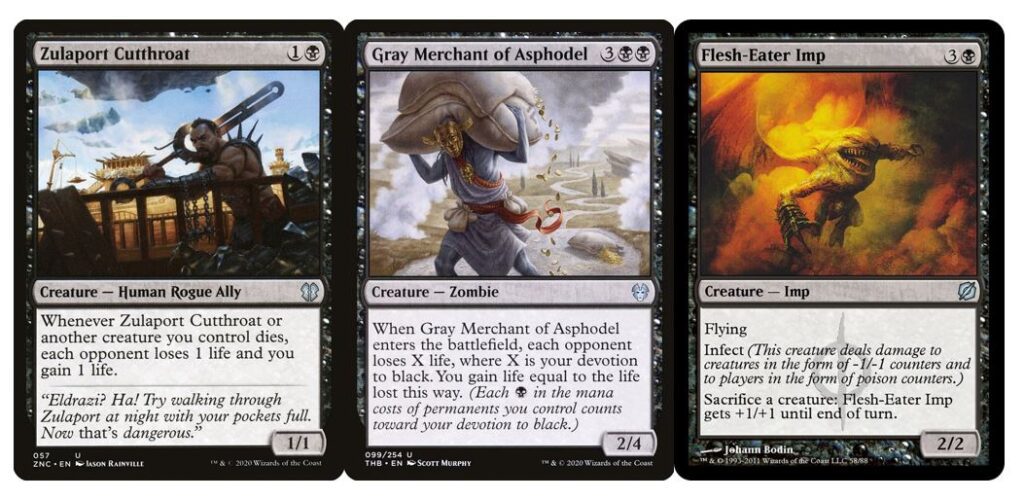
Here is Ian’s budget Shirei list, for reference.
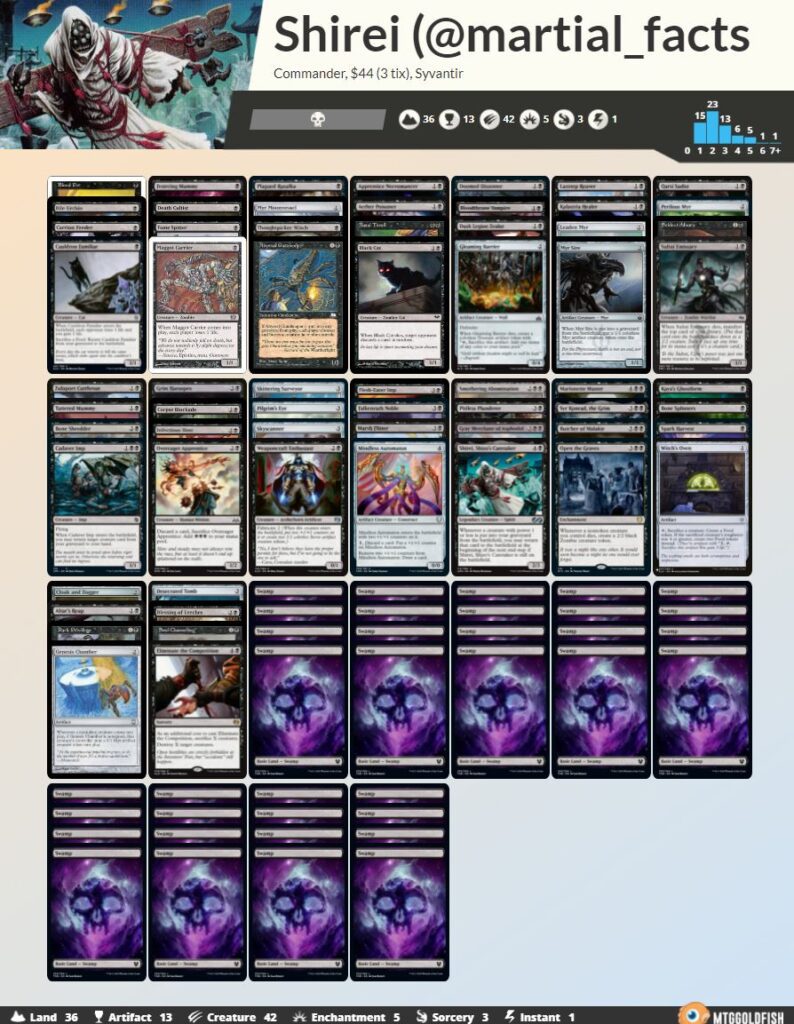
Aristocrats is an archetype that’s leaning further towards combo as time goes on. It’s powerful and resilient, but it’s not everyone’s cup of tea. If you like the idea of playing fun sacrifice decks without going infinite – or if you’re a fan of the sacrifice decks in Standard or Historic – then Shirei will certainly take care of you.
Sasaya, Orochi Ascendant – Big Mana
Long ago, before green could do anything it wanted, it was the closest to being “the Timmy color”. Ramp spells, enormous creatures, and splashy plays are the most popular tunes from Timmy’s songbook. Even now, it still feels good to spend astronomical amounts of mana on enormous plays.
To make sure you can cast all these spells, you need to make sure you’re generating more mana than anyone else. That’s where Sasaya, Orochi Ascendant comes in. Once you meet her criteria, she flips into Sasaya’s Essence: a legendary enchantment that doubles the mana output of every land you own! That should be more than enough to outscale the table.
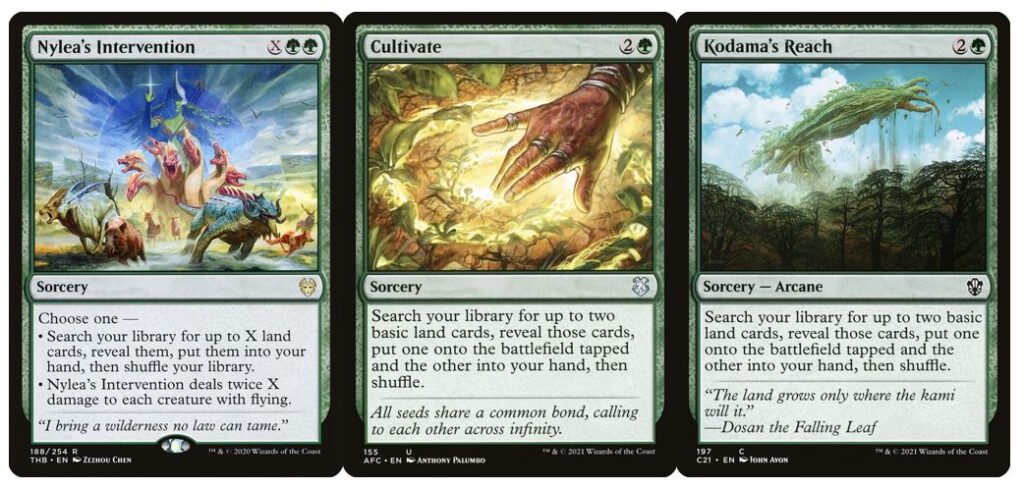
First of all, you need to flip Sasaya. Cards like Nylea’s Intervention are perfect; they can grab multiple lands, and they scale well as the game goes on. Cultivate and Kodama’s Reach are excellent here, too, as they replace themselves in hand with a Forest when you play them.
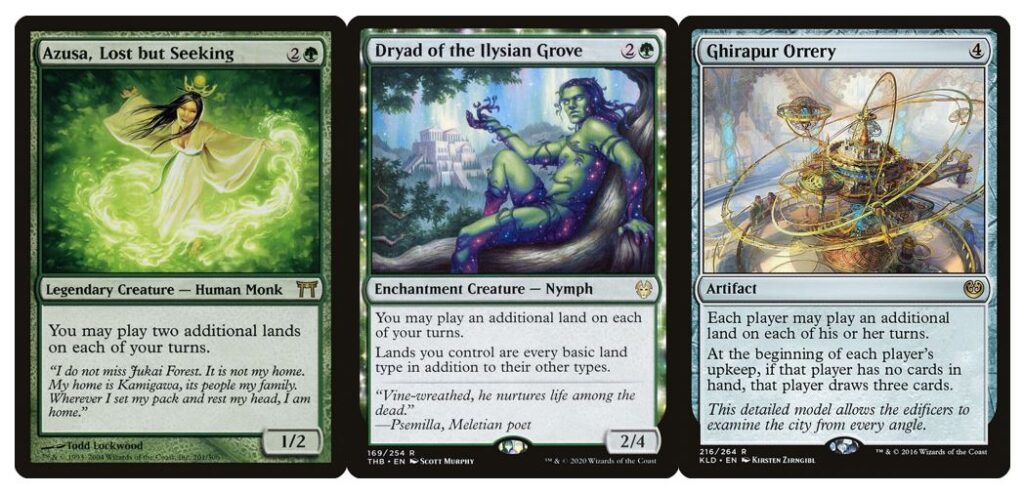
Once you have enough Forests in hand to flip Sasaya, you need to get the lands onto the board as quickly as possible. Azusa, Lost but Seeking is one of the best options, as well as Dryad of the Ilysian Grove and Ghirapur Orrery.
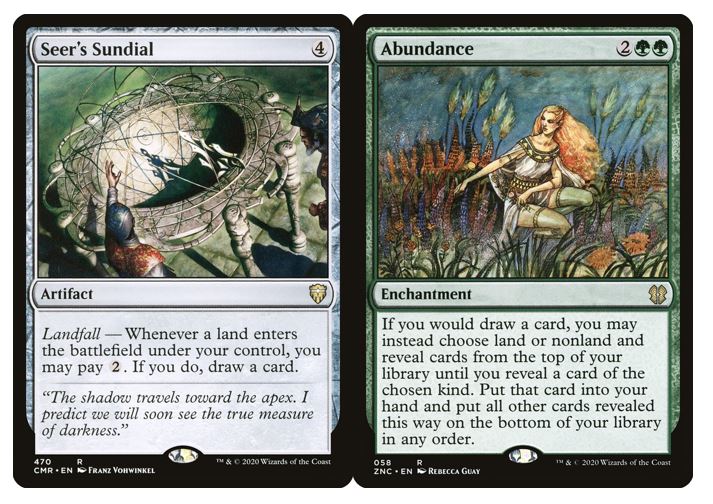
With all these lands in hand, you need to be able to convert them into action. Seer’s Sundial does more work here than in most other decks, thanks to your abundance of lands. Speaking of which, Abundance is amazing here; Sasaya decks tend to have a very high land count, so you risk flooding without a contingency plan. Thankfully, Abundance will solve that issue immediately for you.
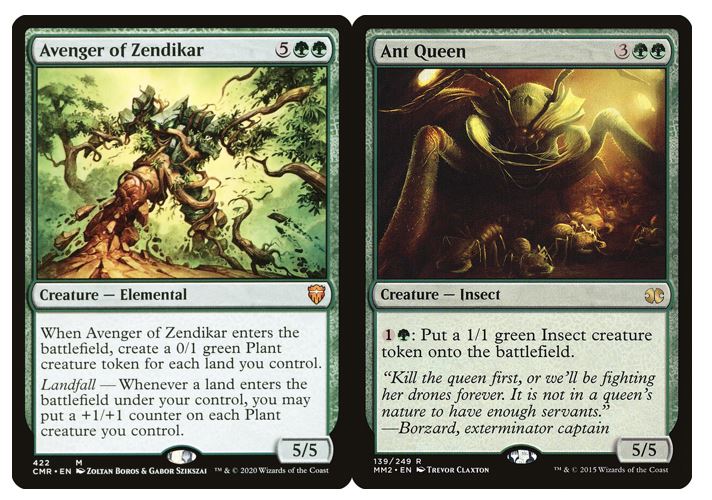
When it comes to closing the game, Avenger of Zendikar is too iconic to avoid inclusion. It’s the de facto threat for land-heavy decks, and good at any stage of the game. As you’ll likely have plenty of spare mana, creatures like Ant Queen become excellent outlets, capable of creating a full board in a single turn thanks to your supercharged lands.
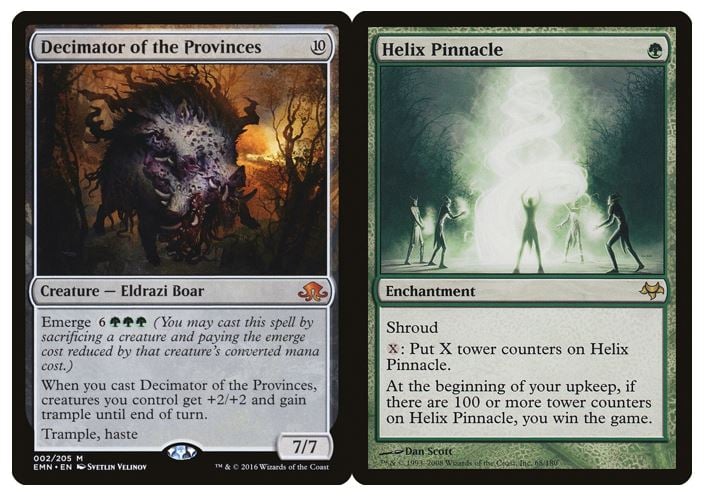
When you want to end the game on the spot, you’re flush with choices. Craterhoof effects like Decimator of the Provinces are safe classics, but with this much mana at your disposal, why not reach for the stars? Helix Pinnacle is, well, the pinnacle of wins, guaranteed to award you bragging rights every single time.
Here is @LeojPies’s Sasaya decklist.
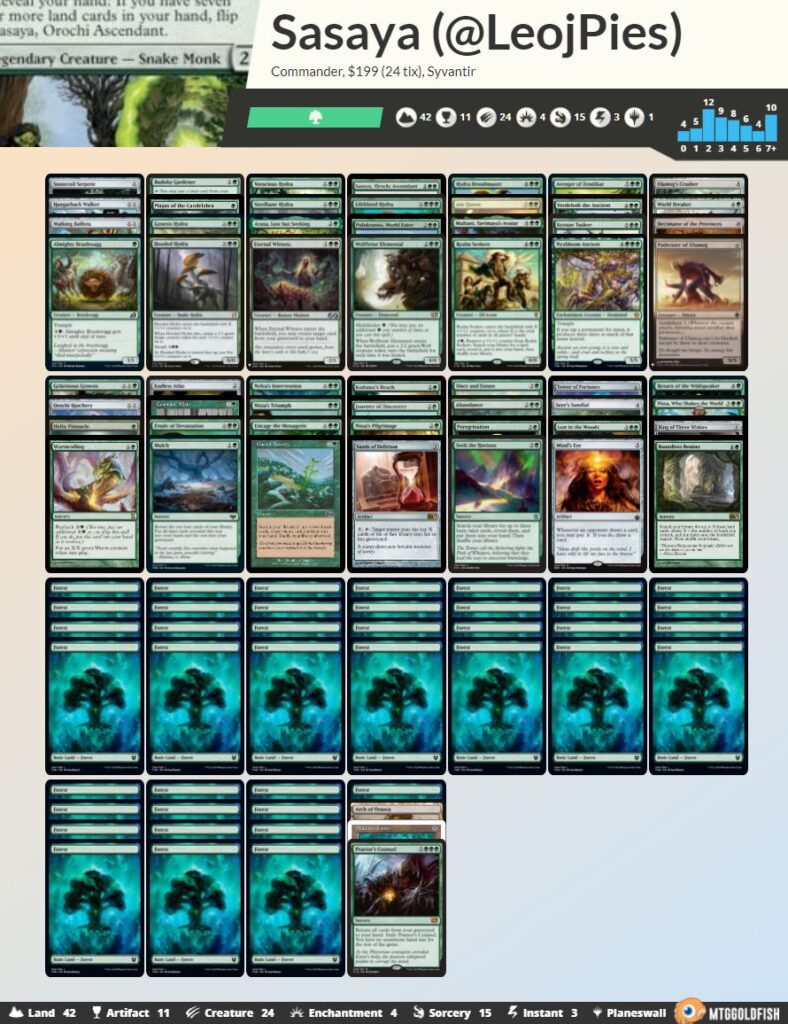
Ramp decks can be very straightforward, but Sasaya brings a unique direction to the archetype. This is my friend Joel’s (@LeojPies) list, and he originally made it as a way to maximize budget cards while still having that premium big mana energy. If you’re looking to spend more mana than the rest of the table combined and have a blast in the process, Sasaya is the commander for you. Some would say she’s the very essence of ramp!
Zo-Zu the Punisher – Punisher
The original Kamigawa block was chock full of legendary creatures, and not all of them were the friendliest little buddies. Zo-Zu the Punisher is a prime example of a commander that causes problems on purpose. Lands are essential to playing the game, so why not try to punish your opponents for using them? While you’re at it, why not punish them for everything?
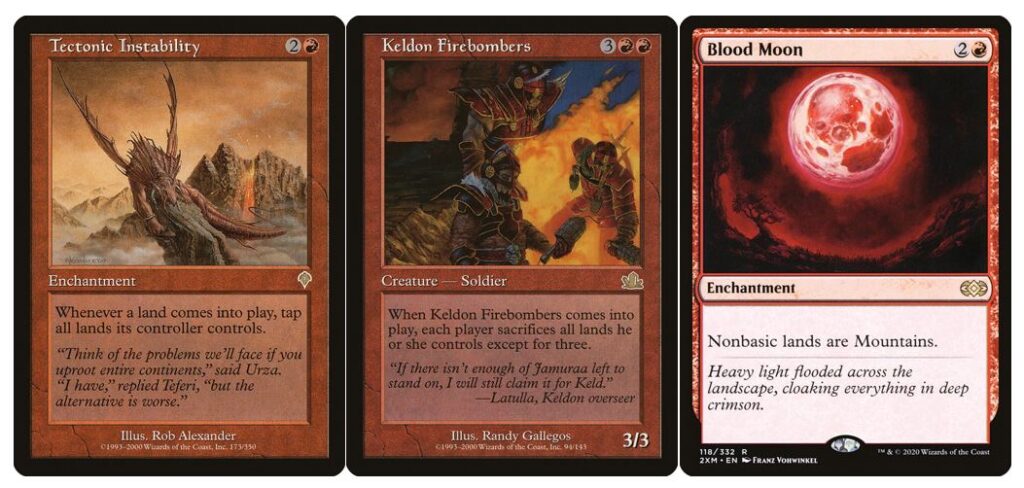
Zo-Zu can feel like a prison deck at times, as it looks to keep your opponents’ resources in check. The general idea is to keep a chokehold on their lands, then damage them for any action they try to take. Effects like Tectonic Instability and Price of Glory force action from your opponents on their turn, making them effectively play at sorcery speed or suffer the consequences. Keldon Firebombers and Wildfire will keep them light on lands, forcing them to play directly into Zo-Zu’s punishment. If you really want to lock them down, Blood Moon and Magus of the Moon will ensure their greedy mana bases no longer work in their favor.

When you have them in a chokehold, it’s time to whittle them down through their every attempt to escape. Ankh of Mishra doubles up Zo-Zu’s effect to increase your clock. As these effects hit you as well, you can break the symmetry through spells like Sun Droplet, which should keep your life total above theirs for the game.
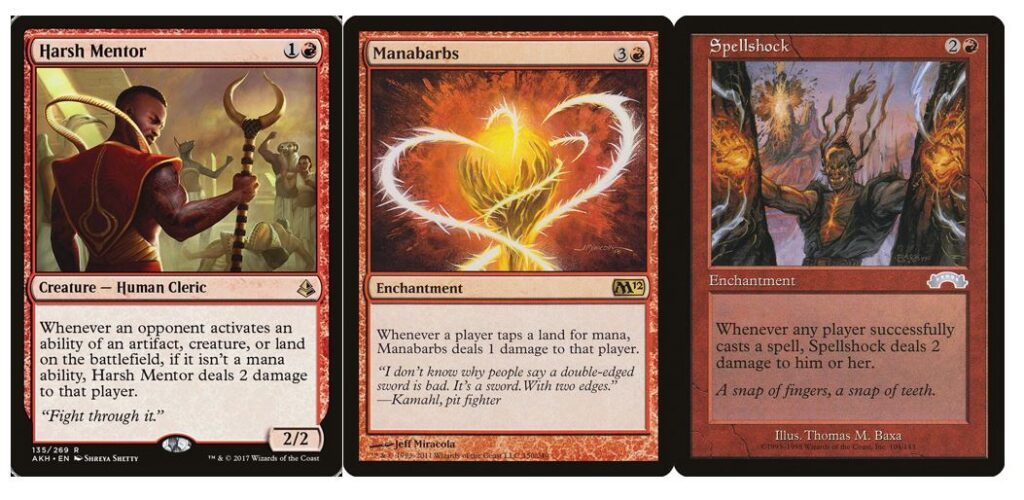
Now it’s time to start piling on the damage! Harsh Mentor, Manabarbs, and Spellshock will burn players whenever they activate abilities, tap lands for mana, or even cast spells. Once there are just a couple of these effects on board, players could be looking at upwards of 10 damage per turn!
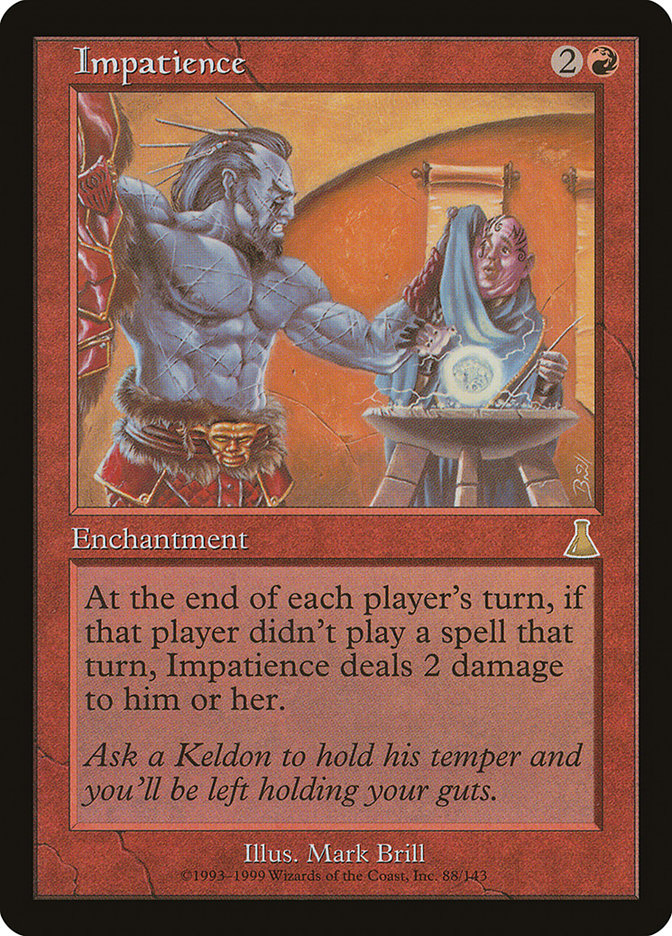
But what if they try to circumvent these effects by doing nothing, perhaps waiting until someone else deals with the issues? That’s what Impatience is for.
Here’s a Zo-Zu deck list to get you started.
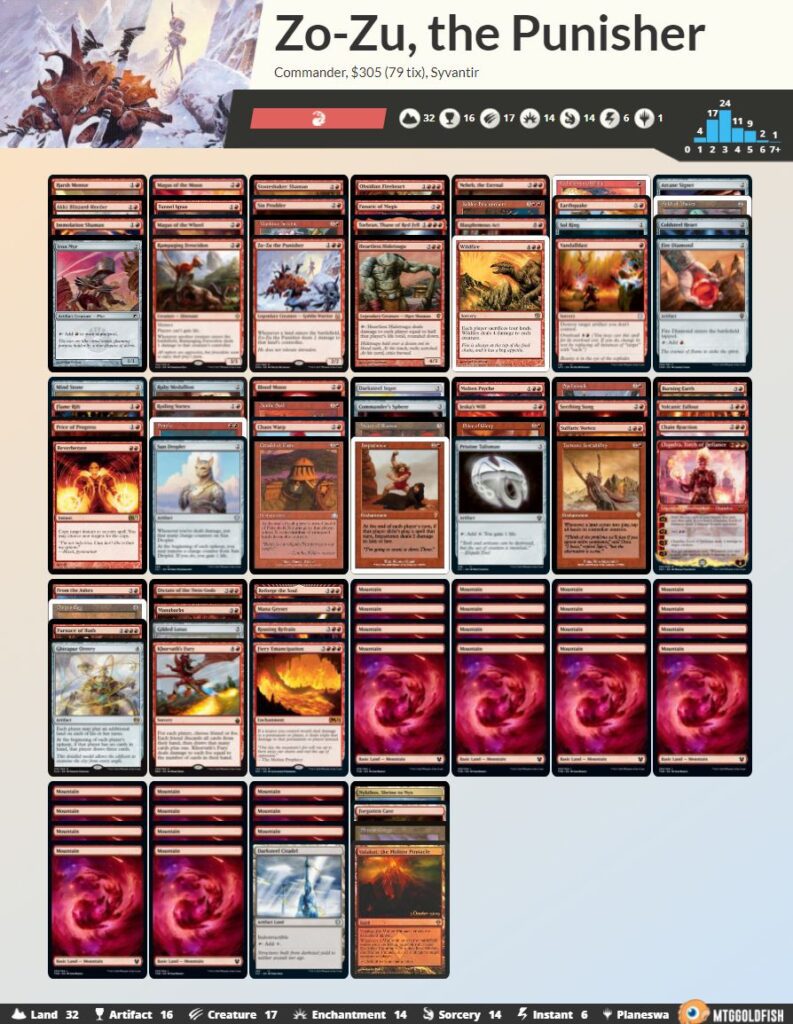
Zo-Zu is one angry little Goblin, and they’re a great example of the kinds of effects that Magic design has moved away from. In most games, these effects can sometimes feel restrictive or frustrating. However, once players know what they’re getting into, these kinds of decks can become a sort of challenge; they turn a typical game of Magic into a puzzle, where the level of importance shifts heavily across resources to provide a unique experience. As long as you express your intentions correctly in the Rule 0 conversation, players will know what to expect, and will often be happy to try their hand in the gauntlet!
Hokori, Dust Drinker – Stax
Okay, so bear with me on this one. As I mentioned above, Magic design has moved away from some mechanics and principles, to ensure that more fun was being had overall. But for some people, Magic is a zero-sum game. Whether you like it or not, players take great pleasure in stopping the rest of the table from playing the game. These strategies, like Stax, hatebears, and punisher decks, are often stigmatized due to the kinds of play (or lack thereof) that they encourage.
Do I think they should exist? Absolutely, though everything in moderation. As with Zo-Zu, if I’m told beforehand that I’m going up against a full-on Stax deck, I know what I’m getting myself into, and I can go in with the right mindset. That’s when they become a fun (albeit occasional) exercise.
Hokori, Dust Drinker is one of the most egregious examples of an “unfun” commander, and it’s easy to see why. Unlike Zo-Zu, who looks to finish the game quickly by punishing opponents for acting, Hokori wants to prevent opponents from doing anything at all.
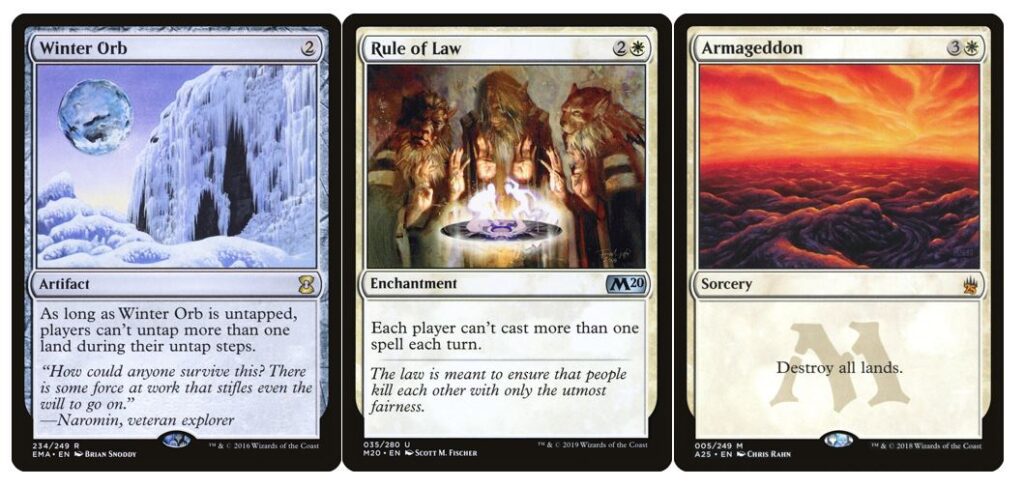
All the hallmark Stax cards can be found here. Winter Orb and Static Orb provide redundancy for Hokori’s abilities, which can be especially powerful when mixed with effects like Tangle Wire. Rule of Law, Ethersworn Canonist, and Deafening Silence all stop players from casting multiple spells in a turn. And once you’ve slowed down their board development and you have enough mana rocks to break the symmetry, Armageddon will stop your opponents from interacting at all for several turns, while you continue to build toward a win.
Many players know it’s wise to concede to a Stax deck once a lock is in place, regardless of whether they have a win condition out or not; there may still be a 1% chance to win, but the chance isn’t usually worth the struggle. However, sometimes your opponents stick around on principle, so you have a Plan B: hatebear beatdowns.
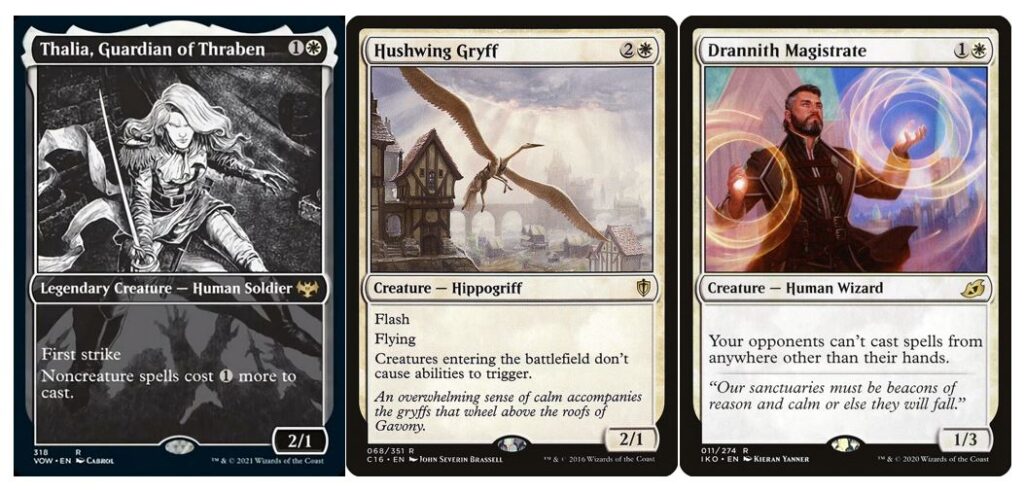
Thalia, Guardian of Thraben and Lodestone Golem add an extra layer to the lock while providing some level of offense. Hushwing Gryff will shut down enter the battlefield triggers, Aven Mindcensor prevents search effects, and Drannith Magistrate stops commanders from being cast. Once you’ve sealed up all of these outs, you can win at your leisure with these small attackers, or simply hang back and win with Approach of the Second Sun!

Here’s a Hokori list I built so you don’t have to.

Your playgroup will be glad to know that I’m not suggesting you build Hokori. I do believe that you shouldn’t blindly hate on decks just because they stop you from doing your thing. Sure, Stax isn’t for everyone, but it can be an engaging challenge once you approach it with the right mindset. If you like games like Dark Souls, then this may be the deck for you to play against!
A lot has changed between the original Kamigawa block and now – not just in the plane’s lore, but also in the game of Magic itself. Our commanders and spells are now stronger and more impressive than ever, and the overall levels of fun are at an all-time high. However, there’s something to be celebrated by going back to the game’s roots. It can help us see the improvements through a different lens, it can unearth hidden gems that would have otherwise been lost, and it can even give you some new or nostalgic experiences (depending on how long you’ve been playing).

Scott is an Irish content creator and the Head of Budget Magic for the Izzet League. He focuses on affordable decks in Pioneer, Modern, and Pauper, particularly ones that stray from the mainstream. When he’s not writing about his favorite decks, he can be found talking incessantly about them on Twitter and on The Budget Magic Cast.

